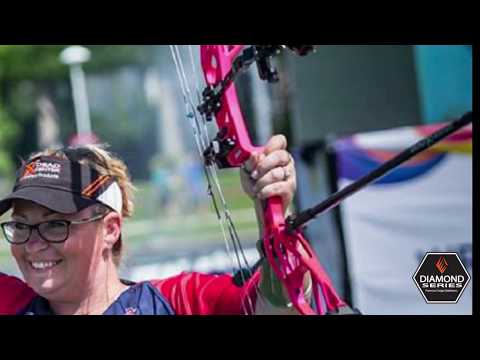Bow Stabilizer : Your Ultimate Overview to Improved Archery Precision
Bow Stabilizer : Your Ultimate Overview to Improved Archery Precision
Blog Article
Maximize Your Archery Accuracy With These Bow Stabilizer Techniques
One essential component that can considerably impact your efficiency is the correct use of bow stabilizers. Whether you are a seasoned archer looking to improve your abilities or a novice anxious to improve your precision, mastering these bow stabilizer techniques could be the trick to hitting your mark with unparalleled uniformity.
Advantages of Using Bow Stabilizers
Using bow stabilizers can considerably enhance an archer's accuracy and total performance by minimizing bow torque and vibration. Furthermore, bow stabilizers wet resonance, which not just enhances the convenience of shooting yet also protects against the bow from leaping upon launch, thus helping in preserving appropriate goal.
Moreover, bow stabilizers can aid in holding the bow constant, especially during windy problems or when shooting from longer distances. The added weight at the front of the bow provides stability and balance, enabling the archer to focus on aiming without the distraction of bow motion. Overall, the advantages of using bow stabilizers expand past just precision, improving the archer's experience and efficiency in various shooting situations.
Picking the Right Bow Stabilizer
Choosing the appropriate bow stabilizer is vital for enhancing your archery tools and enhancing shooting efficiency. When selecting a bow stabilizer, there are a number of aspects to take into consideration to guarantee you locate the appropriate suitable for your needs. Firstly, take into consideration the weight of the stabilizer. Larger stabilizers can aid lower bow torque and take in more resonance, causing a steadier goal. Nonetheless, lighter stabilizers supply more maneuverability, which can be valuable in specific shooting situations.

Finally, take into consideration the design of the stabilizer. Some stabilizers include flexible weights or dampeners that allow you to personalize the equilibrium and feel of your bow. Eventually, picking the best bow stabilizer includes locating a balance between weight, design, length, and material to enhance your shooting accuracy and general efficiency.
Correct Installation Techniques
To make certain optimum efficiency and safety and security in archery, understanding appropriate setup strategies for your bow stabilizer is crucial. The initial action in mounting a bow stabilizer is to determine the appropriate positioning on your bow.
Following, firmly attach the stabilizer to the bow using the appropriate placing equipment. It is crucial to tighten up the stabilizer snugly to protect against any kind of tottering during shots. Some stabilizers feature flexible weights that can be included or gotten rid of to adjust the balance of your bow. Experiment with various weight configurations to discover the optimum equilibrium that fits your capturing style.

Changing Stabilizer Weight and Size
After making certain the correct installment of your bow stabilizer, the following action entails changing the weight and size to enhance its More Bonuses performance in enhancing archery accuracy. The weight of the stabilizer plays a vital function in lessening bow motion during the shot cycle.
A longer stabilizer can give greater stability by increasing the distance between the bow and the weight at the end of the stabilizer. On the other hand, a much shorter stabilizer uses extra ability to move and might be chosen by archers that value agility and quick movements during capturing.
Advanced Stabilizer Tuning Tips
Accomplishing optimal bow security and precision in archery requires a nuanced method to innovative stabilizer tuning. Advanced stabilizer adjusting includes fine-tuning numerous elements to boost the bow's balance, lower vibration, and boost overall precision. One essential strategy is to try out article various stabilizer configurations, consisting of side-bar and back-bar configurations, to find the suitable balance between security and maneuverability for your shooting design. bow stabilizer. Additionally, changing the angle and positioning of the stabilizer can have a significant effect on how the bow responds upon release.
One more vital element of Source sophisticated stabilizer tuning is optimizing the damping homes of the stabilizer system. Checking out different materials for the stabilizer building and construction, such as carbon fiber or light weight aluminum, can additionally affect the bow's performance by altering its weight circulation and rigidity.
Final Thought
In conclusion, making best use of archery accuracy can be achieved with the proper option, installation, and change of bow stabilizers. In general, incorporating bow stabilizers into archery practice can lead to enhanced performance and boosted precision.
Utilizing bow stabilizers can significantly improve an archer's precision and general efficiency by lessening bow torque and resonance. Longer stabilizers offer better stability and equilibrium, especially for long-distance capturing, while shorter stabilizers use more versatility and are easier to steer in tight areas (bow stabilizer). Carbon fiber stabilizers are lightweight and resilient, while aluminum stabilizers are durable and offer superb vibration dampening
A longer stabilizer can supply better security by enhancing the distance between the bow and the weight at the end of the stabilizer.One more crucial element of advanced stabilizer tuning is enhancing the damping residential or commercial properties of the stabilizer system.
Report this page